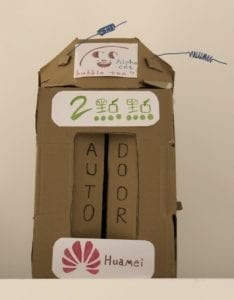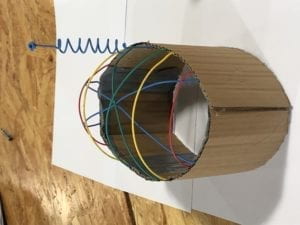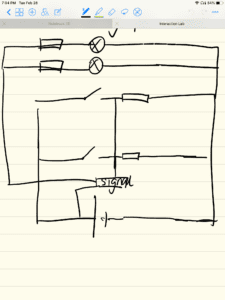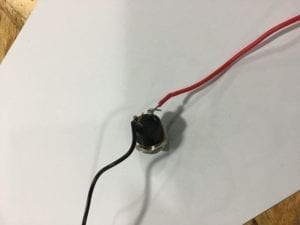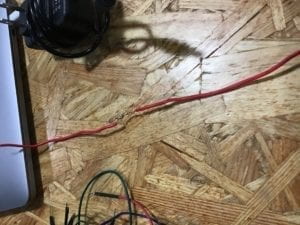During the recitation last week, we got to explore the stepper motor, with a circuitry that couldn’t be more complex. The ultimate goal of the recitation was to get two of these stepper motors working collaboratively to produce the art of the machine.
Without doubt, in step 1, the most complicated part of was assembling the circuitry. It took me almost ten minutes to connect all the wires to the circuitry, and double check whether I’ve made the right connection. Luckily, everything worked perfectly, and nothing burned after powering up the circuitry.
Step 2 involves controlling the angle of the stepper motor with a potentiometer. To make the stepper motor work properly, I have to change the number in the code, from 100 to 200. A map function is also needed to convert the number between the analog read and write. Thanks to t
he learning assistant, I was able to correct my code and prevent the Arduino from short-circuiting and burning.
Step 3 was the most interesting part of all. My partner and I have to use two stepper motors to control one marker, while remain the individuality of each stepper motor. What we encountered during the drawing process was the pen not being steadily locked on the external plastic and went on scratch on the paper.
In conclusion, my biggest take-away from last week’s recitation was how we should double check our code. Instead of checking the code on one’s own, it would be much better and more efficient if one could have his or her partner to cross-check the code. Otherwise one could hardly find the bugs or syntax errors in the code.
Question 1:
The machine I would be thrilled to make would be switch controller allowing me to turn on and off the light remotely. It is inspired from my personal experience of having to get off the bed to turn off the light after using phone before going to sleep. Things are especially tricky when living on the second floor. The actuators involve several servos, probably an infrared module to remotely receive the signal from a controller. The digital implementation of art would be using the servo and a plastic piece to create a rockerarm. It could turn on and off the light by having the arm on it pressing the button.
Question 2:
The art installation I looked into was the Fish, Plant, Rack. I was most attracted by its concept of using the fish’s neural activity to control the living condition of the plant. In this way, the fish’s neural activity could be visualized upon the living condition of another creature. Maybe this device is predicting the future of us human, where we could just use our thoughts to control everything. The biggest difference between this project and what we did during the recitation is the way the output is presented. In the recitation, the output is simply drawn on a piece of paper. In the fish project, however, the output can only be reflected through the livelihood of the other creature. The actuators might involve several electrical pulse receivers, several switches used for controlling throwing in of the nutrients.

